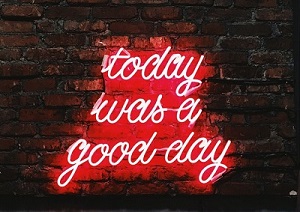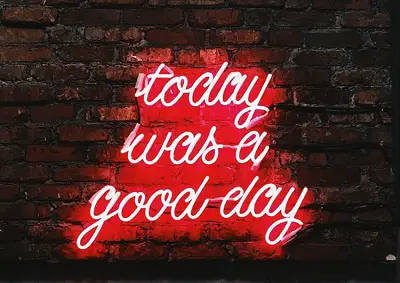Many people around the world wish others a good day in various contexts. Some use abbreviations of the term. For example, this happens in Australia with “g’day”.

People in several countries use the full term but adjust their tone in different settings.
The way you respond to Good Day depends on the formality of the greeting and its use. With friends, you can directly ask how they are doing. In business, you need to add the company’s usual phrases, such as your name and how you can assist.
Good Day in Emails
Some business people use “good day” as their standard greeting in emails. They prefer this to shorter greetings such as hello or hi.
Using good day in their emails gives them a less casual feel. However, it’s also not as limited in terms of time, as a greeting like “good evening”.
If you open an email with this type of greeting, you should respond in kind. Also, mirror other aspects of the email.
For example, if the email uses a specific type of phrase to close, you should use the method to close your response.
In-Person Greetings
When you meet someone in person, they may often say good day to you when they first greet you. In this situation, you can respond in kind. You can use the exact phrase that they used or respond with another appropriate greeting.
You could say:
“Good day to you.”
“Good day.”
“Good day John.”
If it’s morning or afternoon, you can also replace that greeting with a more time-appropriate one. That is, you can use one that is specific for that time of day.
For example, you could say:
“Good morning, Niccolo.”
“Good afternoon, Carmelita.”
How you respond depends on your level of comfort with different greetings. For example, if you usually use “good afternoon” between 12:00 noon and 6:00 p.m., respond with that. If you’re comfortable with responding by using good day do so.
However, it’s important to stick to the form of greeting that you’re more comfortable with.
Personal Greetings on the Phone
If you’re on the phone, the way that you respond to good day will depend on your setting and who you’re calling.
When you call someone and they answer with a good day, if they know your voice you might immediately want to ask how they’re doing.
This is typical of personal calls. Friends and family will identify you quickly. In some cases, after a brief greeting, you might want to make a request or otherwise let them know why you’re calling.
This is best in situations where you’re calling at a time when the person doesn’t have a lot of time to talk or you’re also in a hurry.
For example, if you’re calling a parent in the morning when they’re getting their children ready for school you might need to quickly ask for information or make another request right after they answer the phone with “good day”.
You could say:
“Hi Jenna. It’s me. Can I drop by this evening for the package?
“Good day, Eddie. Please remember to carry the documents to work today.
“Good morning, Miguel. I’ve emailed the card to you.”
Professional Responses for Phone Calls
When you’re at home and someone answers the phone with “good day”, your response will depend on what’s comfortable for you. You have the freedom to choose because it’s your personal life.
However, you don’t have the same level of freedom when you’re on business calls. You’ll have to follow established protocols to ensure that you communicate clearly within your sector.
For example, if you’re at work, you’ll have to comply with standard responses. It usually means that in some areas you can answer with hi. However, in others, that’s informal.
Many workplaces say that you should ask the person who answers the call for their name. Some workplace communication policies ask that you identify yourself by name.
For example, you would say:
“Good day, This is Miss Jones speaking. I’ll be there at 10:00 for the meeting.”
“Good day, This is Mr Evan speaking. Did you receive my email?”
“Good day. This is Gemma Jones from The Tire Factory. May I speak to the accountant?”
Pay Attention to Context
It’s important to pay attention to the context when you want to decide how you’re going to respond to “good day”. For example, there are a few people who expect you to respond by wishing them the same.
This is not how most people use good day. However, people sometimes use it when they want to wish the other person a good day. If you realize that it’s being used in that way you can simply smile and say:
“You too.”
“I wish you the same.”
“I hope you have a good day too.”
This is not the most common way to use good day. However, it’s important to be able to detect the nuances and recognize when people are using it in this way.
Swift End to Conversations
Human beings need closure. Saying goodbye in some way helps to bring that closure. [1] Without that, we can be left with our emotions unsettled or a sense of unease.
That’s why even after a brief conversation it’s important to close well. Saying goodbye after speaking to someone for two or three minutes brings that sense of closure that human beings need. They’re able to move forward into the next stage without feeling a sense of uncertainty or that something was left undone.
When “good day” is used to help quickly end a conversation, you should respond in the same manner. Simply say good day in reply and then leave.
Some people also like to affirm that the conversation is ending by turning their bodies sideways as they speak. Your body language should match the fact that the conversation is ending.
If you’re saying good day in reply, don’t stand in the same position with an air of expectancy. Turn and leave or nod pleasantly and turn your attention to something else.
Sources:

Sophie Hammond is a journalist, psychologist, and freelance speechwriter for people in politics and business. She lives on the edge of the Rocky Mountains with her dog and a lifetime supply of books. When she’s not writing, she can be found wandering through nature or journaling at a coffee shop.

